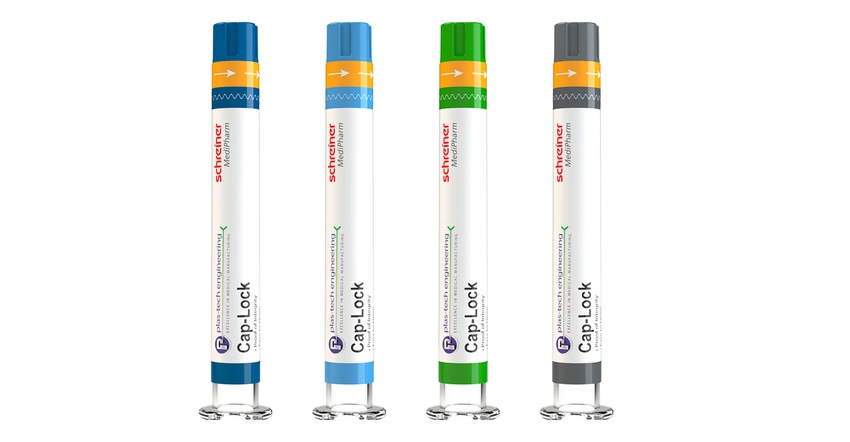June 22, 2021

Germany-based Schreiner MediPharm, a global supplier of functional label technology for the healthcare industry, has teamed up with US-based Plas-Tech Engineering, a company specialized in prefillable polymer syringes, to manufacture and market a first-opening indication for prefilled syringes.
Schreiner MediPharm launched the Cap-Lock cap adapter in the fall of 2019. Less than a year later, it upgraded the device with a label-integrated inlay for automated supply-chain management and digital first-opening indication. The development partnership between Schreiner MediPharm and Lake Geneva, WI–based Plas-Tech Engineering optimizes industrial manufacturing of the cap adapter, providing pharmaceutical and medtech manufacturers with a full-service solution for equipping luer-lock syringes with reliable tamper evidence.
Cap-Lock is a security concept for prefilled syringes that combines a cap adapter and label. Cap-Lock irreversibly indicates whether a syringe has been previously opened, ensuring the integrity of the primary container. Unlike shrink-wrap solutions, Cap-Lock is also suitable for heat-sensitive substances.
Specializing in custom prefillable polymer syringes and injection-molded parts, Plas-Tech Engineering develops and produces the cap adapters. The cap is precisely adapted to the syringe and ensures accurate interlinking with the primary closure by equalizing the diameter differences between the syringe body and closure. The cap adapter can be produced in a variety of colors to support branding. In addition, customization of the cap surface texture is available. Plas-Tech Engineering can deliver the syringe plus applied cap as a validated system.
Schreiner MediPharm designs the tamper-evident marking label to suit customer- and application-specific requirements. The label can be provided with additional functionalities, such as counterfeit protection, detachable documentation, light protection, and an integrated RFID chip. Thanks to Cap-Lock’s special construction, the label can be applied to the syringe via conventional labeling processes.
About the Author(s)
You May Also Like


